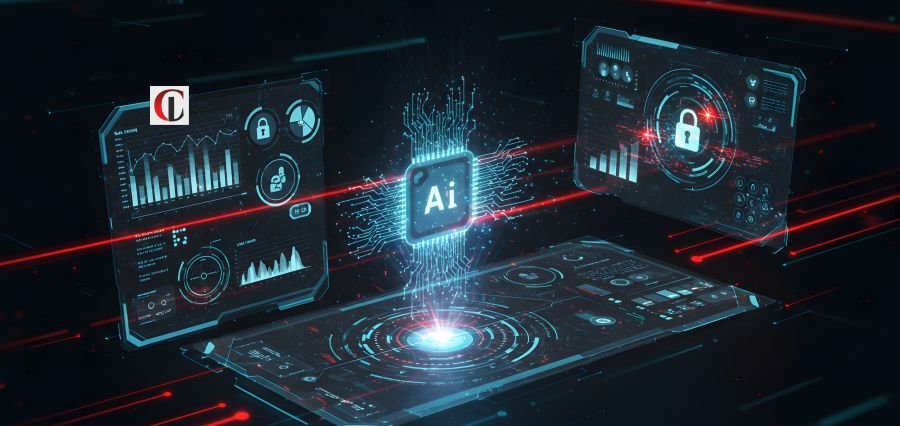The need to enhance good cybersecurity has never been more pressing since the era of digital transformation has taken over the world. Organisations across all industries have been dealing with increasingly advanced cyber-attacks that are rapidly changing at a pace that traditional security cannot keep pace. From web application attacks to ransomware, along with advanced persistent threats, businesses are being compelled to defend mission-critical data, support business continuity, and maintain stakeholder trust. Traditional security controls as critical as they are will necessarily rely on remedial technologies that can fail in the face of high-speed threats. Cybersecurity software’s artificial intelligence is beginning to resemble the game-changer with active defense and intelligent threat awareness features. AI-based cyber defense relies on advanced machine learning algorithms, data analytics, and pattern recognition to identify and counter threats in real-time. Unlike traditional security systems operated by predetermined policies, AI systems acquire knowledge over time from the behavior of the network and identify anomalies characteristic of possible intrusions. With autonomous threat detection and response, AI allows organizations to predict human mistakes, accelerate incident response, and enhance overall security posture.
Proactive Threat Detection
Another advantage of AI in cybersecurity is that it has the capability to detect threats proactively. Machine learning environments possess the ability to scan through vast volumes of data being radiated by network, user, and endpoint actions. By identifying inordinately occurring patterns or outliers of normal actions, AI systems can raise alarms of imminent threats unseen by human researchers. Such monitoring is particularly justified in the identification of zero-day attacks on novel vulnerabilities. By way of machine learning with past and current experience, AI solutions become stronger day by day in predictive measures that enable organizations to foresee attacks that change over time.
Preemptive detection covers social engineering attacks and phishing but not yet the hip methods of entry that cybercriminals use. AI programs will scan email messages, webpage characteristics, and user behavior for patterns of abnormalities prior to damage being caused. The machine learning response and detection feature allow the security team to move in real-time, closing the threat and exposure window. It not only secures the system but also optimizes the deployment of cybersecurity resources so that human security experts handle high-priority threats and AI performs background scans and threat detection.
Real-Time Threat Response
The speed of cyber-attacks calls for real-time response systems, and AI is where it becomes useful. Man response and processing, which may take time to happen, would normally consist of legacy security controls, and the attacks have a chance to become more potent. AI-based solutions can instead automatically trigger pre-programmed response actions such as segregating infected devices, blocking malicious traffic on networks, and quarantining malware infection. These instant countermeasures have significantly reduced the effects of security breaches and ensured business continuity. AI also enables prioritization of internal threats in the context of severity to guarantee that serious threats are addressed simultaneously.
In addition to auto-response, AI also warrants incident response procedures and collaboration among security teams. With fusion of threat feeds intelligence with security data across several systems, AI provides a unified view of active attacks and hidden vulnerabilities. Such shared awareness informs more informed decision-making and faster security incident isolation. The intersection of predictive analytics, real-time detection, and automated response embeds an active defense function highly resistant to the cyber threats of today. AI-based cybersecurity-uptake companies will likely decrease risk, downtime, and sustain ongoing regulatory compliance.
Dynamic Threat Defense
Cybersecurity is a dynamic threat and the attackers keep inventing new ways of bypassing defense. AI systems provide adaptive security solutions via ongoing learning from each attack, formulating enhanced threat models, and adjusting response mechanisms. Adaptive learning assists in enabling the effectiveness of security systems in handling dynamic threat agents with little room for effective attacks. AI systems are capable of, with time, recognizing pre-emptive indications of threats and provide insight into trends arising, allowing organizations to update their security policy and infrastructure regularly.
Ongoing learning is also an integral part of smart threat intelligence platforms. Through AI systems correlating internal network information, external threat feeds, and global cyber-security databases, attacks are correlated, advanced attack campaigns identified, and future impending vulnerabilities anticipated. Depending on such data-driven intelligence, businesses can make sensible evidence-based decisions on network architecture, user access management, and endpoint protection platforms. With advancing AI technology, its learning and responding capacity for real-time threats is the foundation of modern cybersecurity practice with near-instant response and long-term sustainability.
Conclusion
Cyberdefense powered by AI is a revolution in organizational response for cybersecurity. With threat anticipation, almost real-time response, and learning adaptability, AI gives maximum conceivable potential to counter, detect, and respond to cyber-attacks. Organizations that have AI have technical excellence and strategic excellence through risks mitigations and customer and stakeholder trust achieved. With increasingly sophisticated cyber-attacks, security AI can be an option but needs to be an option for organizations who would like to realize resilience and continuity. Through surfing on AI-solved answers, firms will free up the reactive defense strategy to cybersecurity to engage in predictive and adaptive defense frameworks, safeguarding precious resources and enabling sustainable digital evolution. The future of Cyberdefense lies in next-gen AI-led platforms with the ability to evolve en bloc with threats that they will be dealing with, a new level of organizational security and operations assurance.
Read Also : Educational Transformation: Innovative Strategies from Visionary Education Leaders

